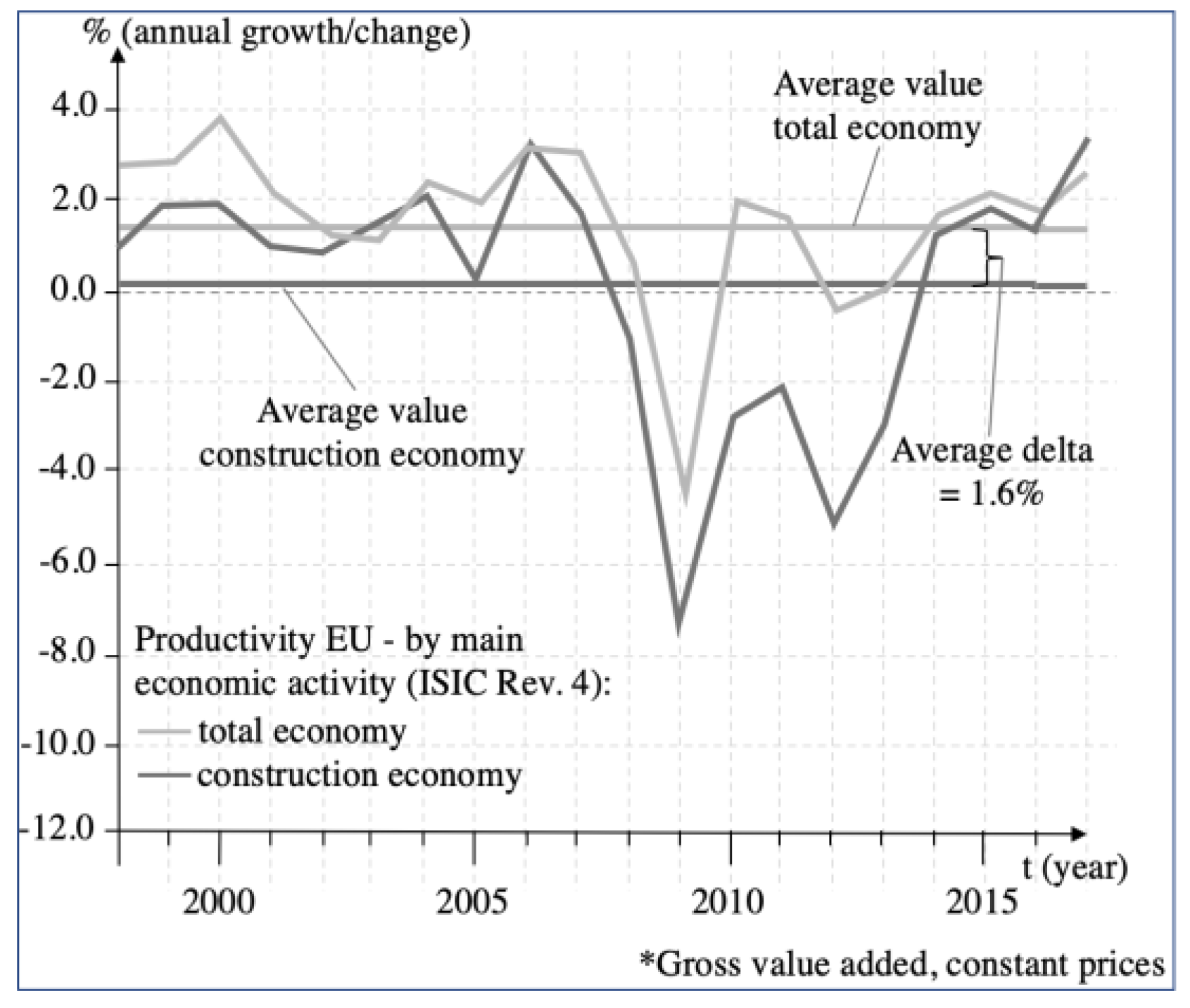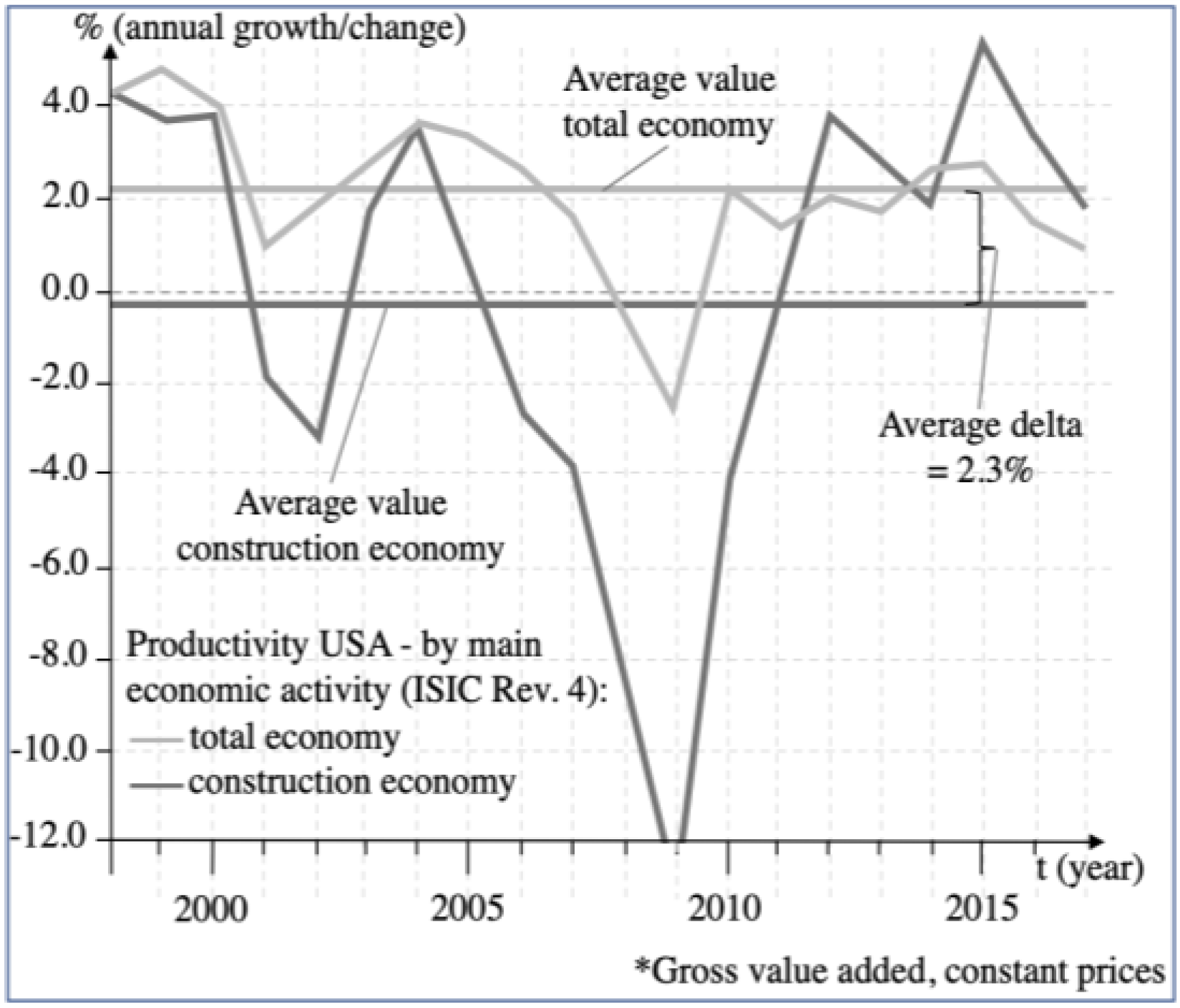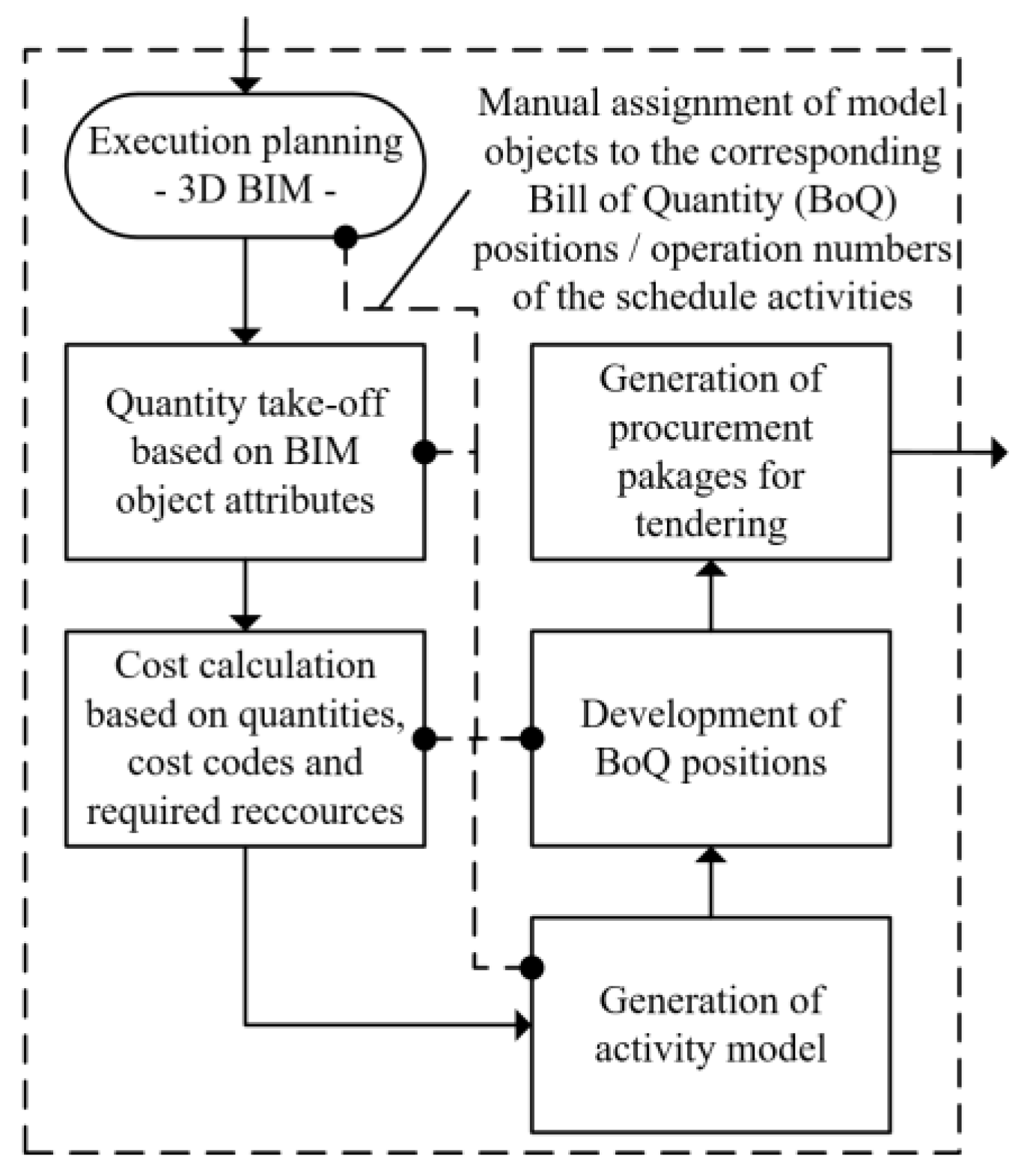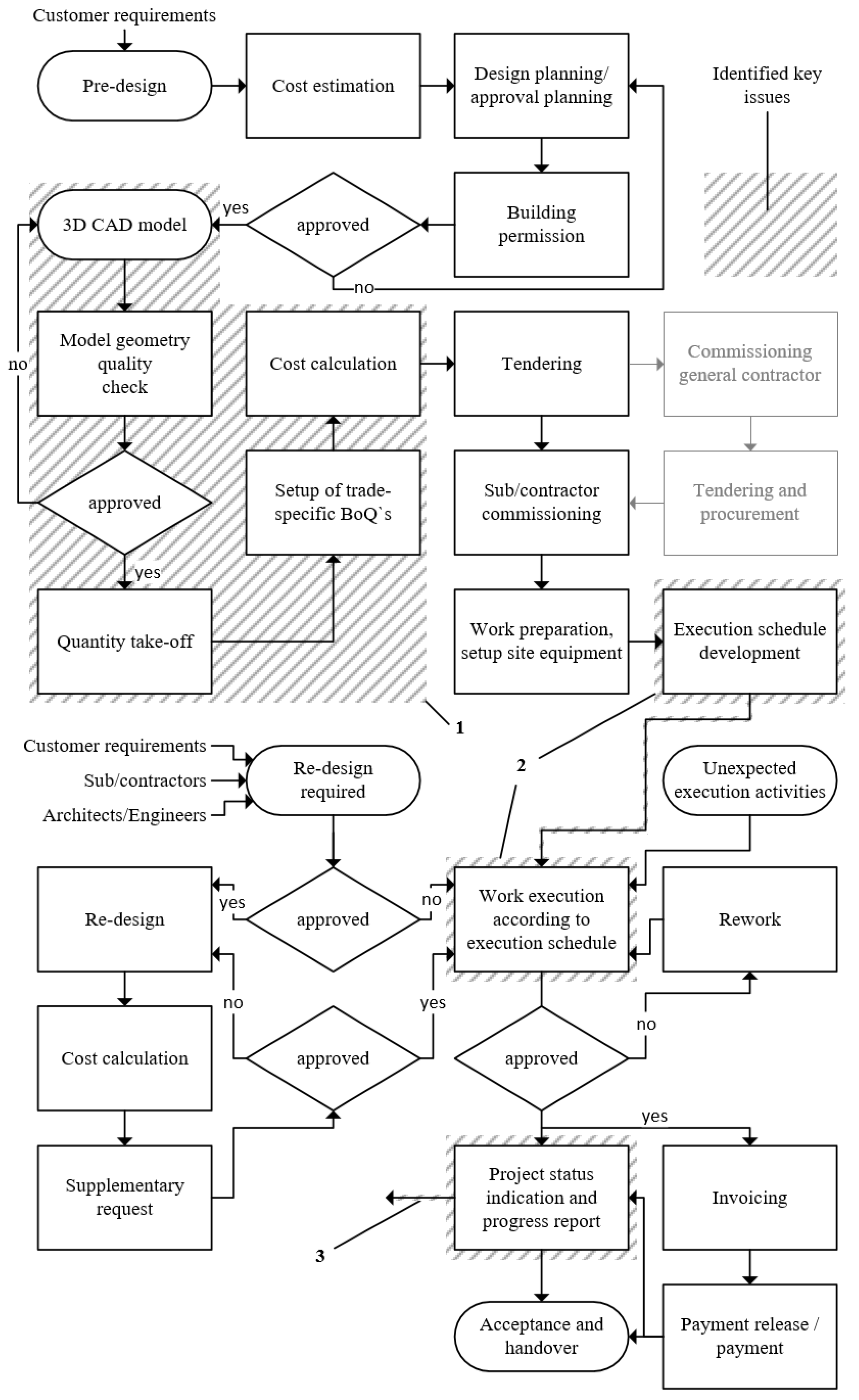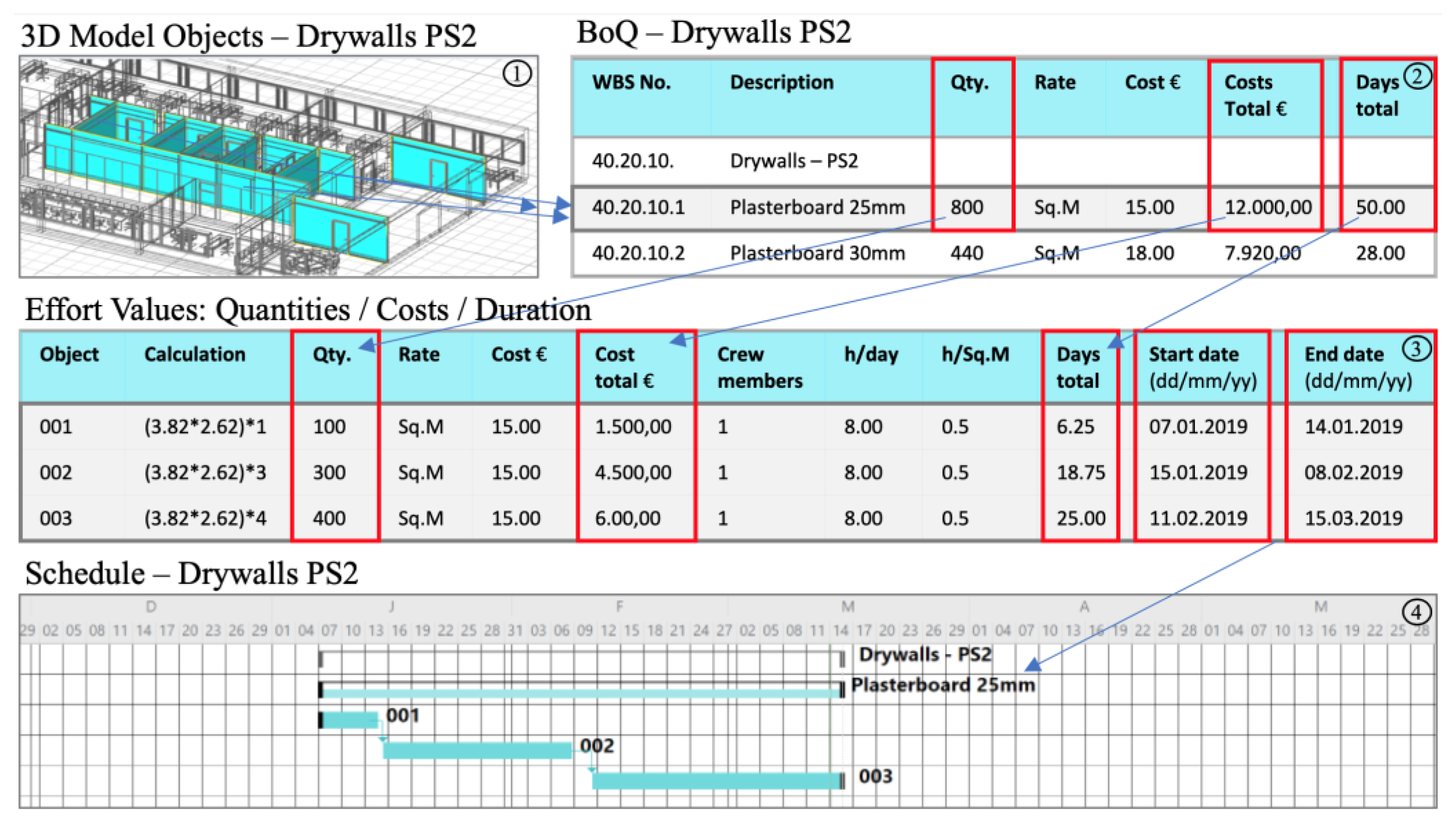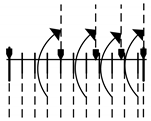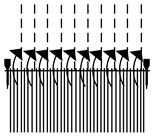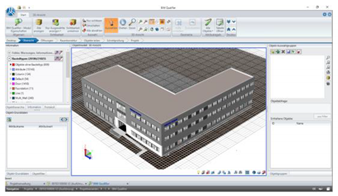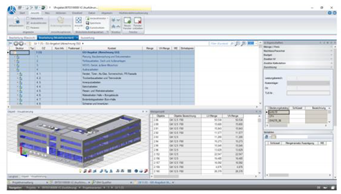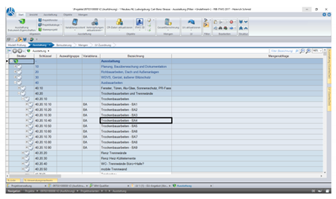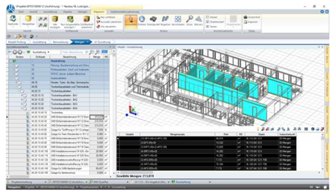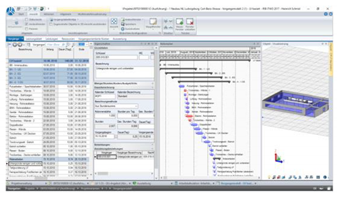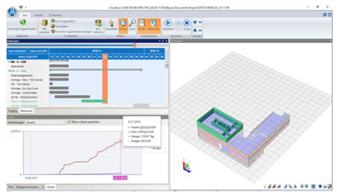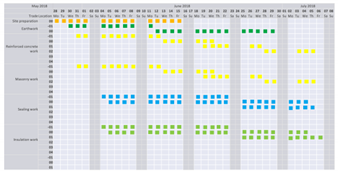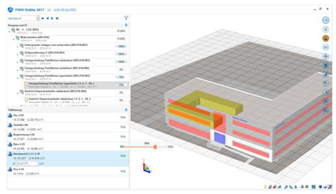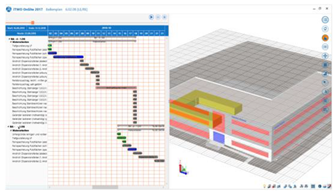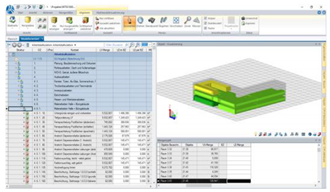1. Introduction
Large-scale construction projects are multi-faceted systems of complex and dynamic processes, which are constantly subjected to a multitude of internal and external influencing factors [
1]. Tight time and budget constraints and increasing technical demands create challenging conditions to keep projects within their envisaged timeframes [
2]. Insufficient limitations on design changes in later project stages, due to customer requests, increase the risk of postponements and growing time issues. Furthermore, the applied schedules often do not meet project-specific process requirements, frequently run out of time, and are exceeded or totally disregarded. In this way, projects are considerably delayed, costs run out of control, and the failure of the project becomes foreseeable [
2,
3,
4].
In contrast to other industrial sectors, the construction industry has struggled to achieve high productivity rates over the past years. The contributing factors are manifold and have inimically affected not just national market conditions but the global construction economy as a whole [
5,
6,
7]. This trend is evidenced by the productivity ratings (gross value added at constant prices) that were continuously recorded between 1995 and 2019 by the statistic department of the Organization for Economic Cooperation and Development (OECD) (comparable EU/US data are provided by the OECD only between 1995 and 2017). During this time, the average annual productivity growth of the European construction sector was at 0.1%, while the average U.S. value was −0.2%. Compared to the total economy, these values indicate an average deviation of 1.6% in the EU and 2.3% in the US [
8].
The annual productivity values of the construction sector in the U.S. increased between 2012 and 2019, highlighting the responsible factors for the error-triggering liabilities in the construction sector. According to the results of many investigations, the tenuous development of the construction industry can be traced back to inefficient working methods. This conclusion is evidenced in
Figure 1 and
Figure 2, whereupon the efficiency of an economic sector is expressed by the ratio between its aggregated input and output values (based on equivalent and comparable factors (e.g., growth per gross domestic product (GDP), gross value added (GVA), total hours worked, unit labor costs) concerning deviating factors, different activity segments, deflators, and exchange rates) [
9].
2. Literature Review
An investigation by Kuenzel et al. (2016) indicated that close to 90% of the analyzed construction projects suffered from coordination problems and unsuccessful project management and exceeded project deadlines [
11]. In the same year, Oesterreich et al. (2016) revealed organizational issues in construction projects to be a fundamental cause of project failure [
2]. Oppong et al. (2017) discovered the insufficient commitment of stakeholders to the project to be an important reason for project failures [
1]. Further investigative approaches have shown that planning issues, complications in project organization, and stakeholder disagreements allows projects to exceed their schedules and budgets. Increasing project complexity, constantly changing customer requests, and a wide variety of regulations result in even greater planning and execution efforts [
3,
12,
13,
14]. Moreover, the sophisticated technical requirements and high quantity of project participants greatly affect the deployment efforts in project management and control. Kim et al. discovered a further issue in 2018 that concerns project workflow interruptions caused by sloppy integration of the supply chain to the project execution process. Many planners, contractors, and small and medium sized enterprises (SMEs) source their information, goods, and services via highly fragmented, unstructured supply chains. Moreover, due to the use of mostly impossible just-in-time distribution options, the delivery of goods is rarely in line with the project’s progression. Thus, the flow of a project is continually disturbed, which leads to significant project time and budget issues that negatively impact the project’s outcome and customer satisfaction [
3,
4,
11].
Sambasivan stated in 2007 that the issue of delays and schedule overruns in construction projects can be understood as a global phenomenon, with conclusive evidence in many studies [
15]. A paper by Olawale and Sun (2015) evaluated several international investigations concerning exceeded costs and mismanaged time in construction projects; according to this paper, Hoffman et al. determined in 2007 that 72% of 332 public US-facility projects were delivered late, and 47% exceeded the project timeline by more than 4 months [
16,
17]. The German Federal Ministry of Construction conducted an analysis between 2000 and 2015 and found exceeded costs and mismanaged timelines in 300 building projects (>10 m EUR). Only 65% achieved their scheduled targets [
18]. According to an investigation by Assaf and Al-Hejji (2006), 59% of 76 evaluated projects in Saudi Arabia were considered delayed [
14].
However, the examples are not only negative. Salem et al. presented a construction project case study in 2006, where the application of specific agile organization and lean construction approaches (applied lean construction elements: Last Planner System; Increased Visualization; Huddle Meetings; First Run studies; 5S; Fail Save for Quality) brought the project’s progression up to three weeks ahead of schedule [
19]. Thomas et al. showed as early as 2002 that a significant reduction in project duration of about 30% is achievable through sustainable project management improvements [
20]. Hanna et al. (2010) and Hwang et al. (2011) found advantages in thorough pre-planning, leading to improvements in the quality of work execution, increased productivity values, and a reduction in project duration [
21,
22].
Nevertheless, the main causes for project delays remain under investigation. Doloi (2012), Braimah (2014), and Larsen (2016), in addition to many others, investigated the significant impediments that directly impacted the project’s schedule [
13,
23,
24]. The results of these studies indicated weak design elements; poor project planning, site management, and project control; insufficient contractor experience; contract payment problems; equipment availability; weather/environmental conditions; and material supply issues as the primary causes for project delays [
13,
23,
24]. A study by Gebrehiwet et al. (2017) revealed 52 of the most likely reasons for project delays; ineffective project scheduling ranked number two, behind deficient project planning [
25].
This investigation shows the international situation of the construction industry and provides information about the general and fundamental problems in construction project planning and execution [
7]. Weaknesses in project design and inadequate schedule and cost management appear to be of particular importance regarding the root causes of errors. The inevitable consequences of these differences between planned and actual values lead to unforeseeable and unexpected additional cost and time requirements and thus to an increasing risk of the projects success. In order to further investigate and narrow down the described causes, current project management methods and the most recent solution approaches will be examined in the following.
3. Current Common Project Management and Scheduling Approaches
To understand a project’s timeframe, certain project management and scheduling approaches—mostly IT-aided and cross-industry applicable approaches—have been implemented in the construction sector during past decades [
15]. The core objective of project scheduling is assigning the start and end dates for individual or cumulative activities and indicating when these activities must be finished to be delivered on time [
26]. A valuable method to gather and structure the required project execution activities is given by the Work Breakdown Structure (WBS) method. This method has no time references but provides a general framework for schedule development and enables project management, monitoring, and control tasks [
27]. A common and widespread scheduling tool is the
bar chart or
bar diagram—also known as a
Gantt chart or
Gantt diagram, which graphically represents the connection between planned and actual work performance and whether activities are on schedule, behind schedule, or ahead of schedule [
26]. Further common methods include the Critical Path Method (CPM), Line of Balance (LoB), Linear Scheduling Method (LSM), and a Network diagram [
28,
29,
30,
31].
First and foremost, these tools are based on the
waterfall principle whose main characteristic is strictly hierarchical embossed organization (priority based) according to the ratio between a chronological task order and appropriate task durations. Each task obtains a clearly defined start- and end-date; dependencies on other tasks can then be determined [
31]. Waterfall systems operate according to the push principle, which releases tasks, materials, or information into preassigned procedures or scheduling systems [
32]. This method is ideally suited for projects with consistent or repetitive proceedings and recognizable long-term interventions due to regular organization [
33]. Due to the predefined structure that is additionally required and/or was previously unconsidered, subsequently added activities could rapidly cause postponements and disturb the flow of a project. Tory et al. stated in 2013 that schedules should be dynamic documents, which can frequently be changed and adjusted in accordance to the project’s progression and its various requirements [
34]. In 2005, McKay and Wiers (2005) indicated that the amount of dynamic and unpredictable activities and the capacity for compensation should be considered when the scheduling method for a project is determined [
31,
35]. Thus, a significant disadvantage of the waterfall system is its non-dynamic ability to react quickly to fast-track changing procedures or ad hoc operations triggered by unpredictable events during a project’s life cycle. Disregarding these disadvantages, waterfall-based scheduling methods are still widespread in the construction industry [
34].
This system is contrasted by the agile methodology, which follows a maximum dynamic mode of operation. Project requirements and tasks are gathered and listed in the initial phase. An iterative process—consisting of task planning, execution, and revision steps—defines the project’s organizational structure. Intermediary assessments can also be implemented to revise short-term activities [
36]. Sanchez et al. (2001) described agility as a cooperative and synergetic strategy that organizes the processing and delivery of customer-specific high-quality goods and services, even in dynamic or unpredictable project environments. Well-structured organization combines constituent project participants into multi-skilled and cross-functional teams with participating members from both (internal/external) customers and suppliers [
37]. The purpose of this method is to streamline project management efforts and to keep flexibility high, even with changes in late project stages [
32]. According to Sacks et al. (2010), the basic methodology behind agile management is the lean approach, which was implemented in and adapted to the construction sector to “reduce variation, improve coordination, implement flow, establish pull, and to reduce various forms of waste in construction projects” [
38]. The potential deficiencies of agile methods include difficulty in predicting a project’s progression and missing the transparency of timescale objectives due to the flexible organization of task execution [
7,
39]. With the introduction of the Last Planner System (LPS) in 1993/94, the first official agile method was applied to the construction industry [
7]. The implementation of master- and phase-schedules have contributed to more organized project execution and have connected production targets with project work structures. Key advantages of the LPS include significant improvements in information exchange and strengthening of the cooperation between project/site managers and foremen, who gather in monthly and weekly meetings to solve upcoming issues before they become critical. Due to its agile characteristics, the LPS improves schedule reliability and is ideally suited for complex, dynamic, and uncertain project conditions [
40]. However, a critical aspect of this method is its limited implementation possibilities, as the system was developed mainly for project execution duties and is thus primarily applicable to the execution phase of a project. Further, the insufficient establishment of the lean principle to pursue perfection is a persistent issue, which prevents the continuous improvements and optimization of upcoming projects. Weekly work plans do not provide provisions to conduct any experimentation; thus, the LPS learns from failure rather than from success [
38]. Moreover, the knowledge gained through work execution is not stored and organized in databases and cannot be used in further projects [
33,
34,
39]. According to Sacks et al. (2010), the LPS achieves a reduction in variation through the early consideration of upcoming issues but misses the implementation of pull by disregarding important indications (signals) generated by downstream operations. Additionally, the LPS rarely provides a clear evaluation of the actual project status, which may cause imprecise project status indications [
38,
41]. In order to optimize this kind of project management, the KanBIM method was proposed, which extends the Last Planner system by the use of a 3D Building Information Model, which allows to visualize the construction progress and obstacles in the construction process through Kanban signals and symbols [
7,
38,
42].
The innovation to use virtual 3D CAD/BIM models for the representation of project performance was initially suggested by Songer et al. (2000), who investigated workflow modeling’s relationship with virtual 3D modelling to visualize project performance [
43]. Later developments produced the 4D method, which connects the virtual 3D model with time-related activity information [
44]. Further common approaches have added an additional dimension to offer the benefits of a virtual 3D CAD model that includes the appropriate project cost elements alongside project related time information (4D). This method is commonly referred to as the 5D methodology [
45,
46,
47].
Figure 3 shows an example of the 5D BIM approach were the allocation of the 3D model objects to the corresponding Bill of Quantity (BoQ) positions as well as schedule activities is conducted manually.
To assign work execution tasks to specific project model parts, Sacks et al. proposed the use of
fine-grained activity information from a 3D model and the creation of work-packages, which can be split into trade-specific tasks that are manageable by individual workers. These packages are represented within this model by Kanban-symbols or as a group of highlighted objects [
38]. Each contractor has to develop an individual trade-specific weekly work plan, which is later synchronized with a general (project-wide) weekly work plan. The “
Kanban card type pull flow control signals and Andon alerts” display the constraints and workflow interruptions within the 3D model [
38]. To avoid interruptions of the execution process, daily on-site inspections and adjustments are conducted by a team of trade-leaders and site managers. The actual project performance statuses are displayed live by the 3D models on various screens at the construction site [
38].
Although this methodology improves the reliability of task delivery and reduces variability, it enlarges project management targets drastically, as trade-specific work plans must be developed weekly before trade-related tasks can be negotiated due to synchronization with project-wide weekly work plans. In this way, tasks with lower priority have negative effects on the decision-making process and encourage undesirable discussions. In this scenario, the highly productive and efficient weekly Last Planner meetings threaten to disappear. Moreover, a trade-specific and project-wide evaluation and coordination of constraints could cause unavoidable latencies, which are critical for proper performance status indication and may hinder the flow of the project.
This analysis demonstrates that previously described methods have yielded significant improvements for individual and specific project characteristics. Approaches for repetitive and dynamic process requirements provide helpful possibilities to handle various project execution operations, even with the implementation of fine-grained activity information from 3D models to display the work in progress. Some important factors, however, retain considerable potential for improvements but have been widely disregarded: (a) close cohesion between predesign/design information (3D model objects) and project related time and cost values could be achieved via a tight interdependence between the 3D model objects, the corresponding Bill of Quantity (BoQ) positions (costs), and appropriate execution durations—this is, in the following, referred to as the 5D Building Information Model (5D BIM); (b) by using the early division of the 5D BIM into clearly defined project sections (PS), the determination of executing relevant target dates could provide a basic grid, which is necessary to structure the agile-organized project execution; (c) the actual required resources and values, determined during work execution (e.g., the actual required execution durations of specific tasks/actual used resources etc.) could be compared with the planned values. On this basis, continuous improvement strategies could be implemented, thus contributing to sustainable improvements of the planning accuracy of future projects.
4. The 5D-PROMPT Method
Since the current scientific literature does not provide a coherent solution that combines the advantages of the previously described methods and the unexploited possibilities, this paper presents a comprehensive approach to obtain these goals. This new concept is referred to as the 5D-PROMPT method. Its main objective is the sustainable reduction of both the deviation and variation between as-planned and as-built construction project targets. The key process consists of:
Fully applied 5D BIM planning (5D BIM setup, including the interlinkage of 3D model objects, scheduling activities, and corresponding costs);
Model split—the definition of approximately equal-sized project sections;
Virtual construction process simulation (waterfall-based);
Virtual construction process optimization (elimination of collisions/utilization of free resources);
The establishment of execution-relevant target dates (project start and end date; project section-based delivery dates (milestones); monthly/weekly review/preview meetings);
The setup of an agile structured project execution planning board;
Agile work execution organization/agile work execution;
Determination of the as-built data (quantity-/cost-/time-based effort values);
The evaluation and comparison of as-built/as-planned data;
The repatriation of as-built data/update of planning data (companywide);
5D BIM-based progress status indication (highlighting of model objects).
A careful selection of these principles is summarized in a multi-crossed hybrid system that operates throughout all project phases in accordance with the individual process requirements.
To provide a broad understanding of the key improvement aspects of the 5D-PROMPT method, and to explain essential enhancements a common and widespread construction design and execution process example should be introduced previously. Its basic structure represents an assumed process of conventional (3D CAD model-based) project planning, tendering, and contracting of subcontractor services, as well as a waterfall-based organization of the work execution. The process is characterized by its appropriate process steps, which are illustrated in
Figure 4.
Potential weak points and missing interconnections that are critical to a coherent and interconnected workflow are represented by the numbers 1–3 and are described as follows: (1) The significant issues include the missing interconnection between the individual 3D CAD model objects/elements, appropriate schedule operations, and the corresponding BoQ positions. In addition, the construction process sequence is not corrected or optimized by simulation. Thus, the project design, project costs, and execution time threaten to drift apart over the course of the project, which will impede project control and are critical to project success; (2) a detailed development of the work execution schedule often takes place immediately before the execution phase starts. Moreover, the utilization of a slightly flexible waterfall-based scheduling method appears inadequate for the numerous unexpected and unpredictable on-site incidents. Further, permanent cooperation between the work execution schedule and on-site operations is required; (3) significant deviations between the planned and used recourse values could be reduced by implementing specific information feedback-loops, which report back crucial as-built values/information in accordance with Deming’s Plan-Do-Check-Act cycle [
7].
Based on the previously presented workflow,
Figure 5 demonstrates the key enhancements and general operating principles of the 5D-PROMPT method. This method consists of five main sections: (1) fully applied 5D BIM planning process; (2) IT-supported connection of the 3D BIM objects, with the associated BoQ positions as well as schedule activities by utilization of linking elements. (3) early determination of project duration and project sections (PS) and definition of target dates for PS deliveries; (5) agile project execution organization according to predefined target dates; and (5) intermediary information feedback loop implementation for project status indication and target/actual comparison by the 5D BIM as the
single source of truth (
SSOT).
5. Mode of Operation
5.1. 5D BIM Planning Process
To take advantage of the 5D BIM-based planning approach, it is crucial to generate the entire project design using a virtual 3D BIM model (
Figure 6(➀)). The individual BIM objects are assigned to their corresponding BoQ positions, which contain product characteristics, costs per unit, and quantity information (
Figure 6(➁,➂)). The technical implementation of the 5D BIM approach, which is applied within the 5D-PROMPT method, uses a link position to interconnect the 3D model objects with the associated BoQ positions as well as schedule activities. It is considered as a key element that ensures a close connection between the individual planning elements and contributes to prevent design, project cost and construction time from drifting apart. This innovation was developed by RIB Software SE within the software solution iTWO 4.0. In order to achieve the optimum performance of the 5D-PROMPT method, this methodology was used accordingly. Time-specific effort values, which provide information about the time needed to execute the required construction tasks (activity duration), are extracted from the BoQ position and transferred to a corresponding activity operation in a waterfall-based schedule application, e.g., Gantt Chart (
Figure 6(➃)). Although the 5D-PROMPT method stipulates agile organized construction work execution, a waterfall-based schedule is developed during the initial project planning phase to determine the project/activity duration and provide a theoretical project execution simulation. In this way, specific start/end dates are assigned to each scheduled activity. To achieve an optimized execution workflow, the methodology of the Critical Path, including the forward pass/backward pass, float calculations, and fast-tracking options, is applied appropriately. In this way, the 5D BIM planning approach enables a virtual construction process simulation, with the concurrent process of project costs and activity durations.
5.2. Determination of the Project Duration and Project Sections (PS) and the Definition of Target Dates for PS Deliveries
To form the conditions for an aspired agile organization of construction execution, a basic grid should determine the direction of the work proceedings. For this purpose, the 5D BIM is split horizontally and vertically in approximately equal sized Project Sections (PSs). The corresponding BoQ positions, and schedule activities are divided and re-compiled appropriately. After schedule reorganization, the project start/end date (Project Frame—PF) and the start/end dates of each PS can be determined. Any other information provided by the waterfall-based schedule has no further use over the remaining course of the project. Applied effort values within the project planning phase are updated/corrected via actually used (as-built) values.
5.3. Agile Project Execution Organization According to Predefined Target Dates
A core aspect of agile organized work execution is the collaborative competence of the contractors (capacity for teamwork) involved in the execution process. All construction trades should be tendered and contracted/subcontracted at this time of the project; specific project organization requirements must become an integral part of the contractor/subcontractor agreements. To manage/organize project execution onsite, an agile execution organization board (hereafter referred to as the
PROMPT Administration Board) is formed in close cooperation between the foremen and site/project-manager. The basic approach in this method is similar to the Last Planner/Scrum/Kanban project organization plans or boards; however, the present method differs in its setup and arrangement [
39,
48]. The PFs and PSs define the general project guidelines and determine the deadlines for PS/total project delivery. Thereafter, fixed time periods are established to manage/review on-site work execution in a monthly and weekly sequence:
The form and concept of the PROMPT Administration Board are explained in
Table 1.
The task organization is graduated from general to particular. Appropriate descriptions are provided in accordance with the specific levels of organization. The setup and formatting of the organizational structure (PROMPT Administration Board) is done during an administration kick-off meeting conducted by the execution team members (foreman/project manager—contractor side/project manager—client side). The workflow and superstructure are outlined in
Figure 7. Since the project start/end dates and milestones for PS delivery are attached to the administration board, the Organizational Units and Task Units can be defined.
Participation in monthly/weekly meetings is compulsory for each of the execution team members. Individual arrangements and general agreements determined during these meetings must be accomplished within the envisaged time frame.
5.4. Intermediary Information Feedback Loop Implementation for Project Status Indication and Target/Actual Comparison
The construction progress is evaluated and updated during the weekly meetings (Report Period) based on the actual completion status values of the planned (trade-specific) targets. The completion status values are 100%, completed; 50%, partly completed; and 0%, pending. The actual status values are displayed in colored markups (green; yellow; grey) by the 5D BIM. Invoices can be issued in accordance with the Billing Periods (monthly). The basis for payment approval is the actual (trade-specific) competition status of the accumulated monthly activity performance.
To achieve sustainable improvement of the planning accuracy, substantial deviations between the planned and actual execution durations are identified and evaluated by the execution team members and reported back to the project planning department to implement a sustainable correction process for time-based calculation matters. Furthermore, deviations between the planned and applied resources can be determined immediately. Thus, the planning accuracy for future projects could be improved considerably.
6. The Comparative Case Study
An initial implementation and performance test of the 5D-PROMPT method was conducted using an actual practice construction project as a comparative case-study. To pre-classify the workability and expected benefits of the new approach (and to make it comparable to previous methods), one construction project was carried out according to conventional planning and execution methods, as described in the process chart in
Figure 4 (hereafter referred to as Project A). During the same time period, an equivalent construction project was carried out according to the 5D-PROMPT method, as described in
Figure 5 (hereafter referred to as Project B).
The performance values of both methods were determined using special Key Performance Indicators (KPIs—listed in
Table 2) measured during/after the execution phases of both projects and subsequently evaluated by a multi-criteria analysis. The required KPIs were selected based on the findings of the literature study and an analysis of the current state project management approaches.
Project A and Project B were carried out by the general contractor company Heinrich Schmid GmbH and Co. KG during the years 2018/19 (Location: South Germany). Twenty-one trades were planned and executed by the project stakeholders over a period of 11 months for each project. As a comparison of the two construction projects would have led to inaccuracies due to a lack of absolute equivalence, a reference value was introduced as a benchmark for data collection. In this study, it is assumed that the process sequence and implementation of Project A are generally known. Therefore, the following section will only describe the procedure for the conduction of Project B. However, to provide a better understanding, the basic process steps of both projects are compared in
Table 3.
As previously described, the design of Project B was based on a 3D BIM. This model was provided by Contelos GmbH, a virtual-modeling company. The construction software developer RIB Software SE provisioned the software tool iTWO Baseline, which was used to create the required interconnections between the individual model objects, the corresponding BoQ positions, and scheduling activities. Furthermore, the model split operations, construction process simulation/optimization, the tendering and contracting of sub-contractor services, and 3D model-based execution status representations were conducted/developed by this software. To minimize the risk of method failure, in addition to the 3D BIM, conventional 2D CAD project plans were also created and kept available for execution.
Since the 5D-PROMPT method was introduced to the project stakeholders, continuous team coaching, and individual training were required to acclimate the participating members to run the project. To ensure a solid foundation, all project-related contracts had to comply with the agile project’s execution requirements. The modeling company was required to elaborate the 3D BIM to confirm the modeling guidelines of the applied 3D modeling software (Revit) and to make use of a harmonized project-wide BIM attribution. A substantial measure was the awarding and contracting of all execution trades, which had to be completed before work execution started. Next, the execution organization team was formed, consisting of foremen, crew leaders, site managers, and the project leader. This team performed the setup of the PROMPT Administration Board using time-regulated “project start and end date as well as milestone date” information, which was determined by the waterfall-based construction execution simulation. Moreover, monthly/weekly time periods for the Organizational Units (OUs) and Task Units (TUs), were added to the board to establish a static structure for the work execution organization.
After work execution started, the team determined, confirmed, and evaluated both upcoming and finished work execution tasks during monthly/weekly meetings. Daily work performance monitoring ensured proper target/actual provisions and provided information about the required execution durations. Actual building statuses were represented by highlighted objects in the 3D BIM. Deviations between the planned and required time and cost values were evaluated and gathered in a database to help make future project planning more precisely predictable and reliable. The core process of the case-study is represented and described in
Table 4.
7. Results and Multi Criteria Analysis
To make the two projects comparable, the reference value for the collection of data was set to 1000 m2 GFA (Gross Floor Area). All measured values were related to this factor. The planned duration of both projects, including planning, tendering, contracting, and execution, was 11 months. To increase the comparability of the two projects, both projects were divided into construction sections of an approximately equal size. These sections were required to optimally allocate the scope of work and to serve as reference points for determination of the project’s process status indication.
Project B was completed within the planned construction period. Each construction section was also completed on time, so each predetermined milestone passed on time. Deviations caused by the estimated values determined during the project planning phase were compensated by the agile construction process organization. Moreover, the implementation of the enhanced 5D-BIM approach has contributed to a considerable reduction of the deviations between the as-planned and as-built values. Project A exceeded the planned end date with a delay of about 4 weeks. The project milestones were passed, on average, 3–5 days later than planned. This resulted in a shift of the entire schedule and caused the final deadline to be significantly exceeded. At first glance, Project B matched the budget; however, additional and unexpected extra costs for necessary tablet/computer hardware and servers, including maintenance, hotline, and update services, were required due to the implementation of the new methodology. These costs amounted to a total of EUR 22,825 net per 1000 m2 per year for Project B. This resulted in an actual cost overrun of 6.04% for this Project. The cost overrun of Project A was 16.2% in total for the reference value of 1000 m2. This was caused by supplements due to inadequate planning, rework and defect management and the extended construction period (extra costs for provision of site equipment and staff).
To obtain the preliminary assessment of the influence of the new method in terms of its enhancements to project performance, accuracy in project planning, and schedule and cost reliability, a Multi Criteria Analysis was conducted. Based on the two alternatives, Project A
and Project B
, and the predefined analysis criteria
previously described by the KPIs (see
Table 2), an evaluation matrix was developed. Here, the cell variables represent the project-based performance value
of each criterion.
To avoid assessment issues and to achieve comparable analysis results, the deviating units of the measurements of the criteria to be compared were unified, and linguistic terms of classification were assigned to a number-based performance value scale. Furthermore, normalization of the analysis matrix was required to obtain only numerical values without any units.
The allocation of each criterion into “beneficial—higher performance value is desired” (e.g., commitment of involved stakeholders) and “non-beneficial—lower performance value is desired” (e.g., exceeding of final project deadline) was next conducted, and the normalized performance value
of each cell had to be calculated. For this purpose, the following formulas were applied based on the criteria classification: “beneficial” or “non-beneficial”. The minimum and maximum performance values were derived from the lowest and highest performance values of each criterion:
Since the analysis matrix was normalized, a weighting factor (
was assigned to the normalized performance values
of each criterion (
) (see
Table 2) to classify its influence on schedule and cost reliability, accuracy in project planning, and project performance. Each normalized performance value was multiplied by the assigned weighted factor to obtain the weighted normalized analysis matrix.
To calculate the absolute performance scores of Project A and Project B, each weighted normalized performance value
of each Project was cumulated. The entire calculation of the performance score per alternative (
and
(Project A; Project B)) can be described by the following formula:
After the collection of all measurement data related to the respective Key Performance Indicators and the evaluation of all values, a total performance score of 0.38 was calculated for Project B. For Project A, the score was 0.12. To evaluate the significance of these values, the ranking scale shown in
Table 5 was used. This scoring model is generally applied to assess alternatives based on several quantitative and qualitative criteria, objectives, or conditions. It is used to analyze a set of complex alternatives to order the elements of the set according to the analysis preferences based on a multidimensional target system. The order is represented by the performance value of each alternative. The evaluation numbers follow a five-fold scale (in this case, 0.05 to 0.55), where a higher evaluation number stands for a superior evaluation (
Table 6) [
50,
51,
52]. As a result, the project planning and execution of Project B according to the 5D-PROMPT method could generally be rated as “good”. In direct comparison, Project A could only be rated as “bad” according to the conventional project planning and execution method. This indicates a considerable improvement of construction planning and execution under the 5D-PROMPT method and suggests an immense enhancement of overall project performance. Further results and differences of both project organization methods are listed and explained in the following section.
The comparison also shows that the number of construction defects during the construction phase of Project B was 82.6% lower than that of Project A. The costs for supplements and changes in planning due to the voice of the customer were also approximately 71.5% lower than those in the comparable project. The commitment of the participants to the newly introduced method of Project B was very high (Grade 5—
strongly agree, from the Likert scale analysis [
49]), but the commitment of the project execution team to the conventional method was also rated “high” (Grade 4—
agree, from the Likert scale analysis [
49]). The number of disability notifications and notices of default was three for Project A, while Project B was completely unaffected by these measures.
There was no absolute stop of construction work in either project. Moreover, an officially decreed construction stop was imposed in neither of the projects, and no workers were injured or killed during the construction process. The costs of implementing the new methodology of Project B were related to the following services: (1) introduction and training of the project organization method, (2) software teaching and training, (3) process consulting, (4) development of project-relevant master data, and (5) operational project support. These services were calculated proportionately according to the reference values of 1000 m2 per year and amounted to EUR 38,500 net in total. These costs include, as described above, the considerable additional costs for extra required hardware equipment and software-related services.
8. Discussion and Conclusions
The initially mentioned productivity growth of the American and European construction sector indicated international structural weaknesses and considerable performance deficiencies over the past twenty years. These preliminary graphs (
Figure 1 and
Figure 2) represent only a portion of the international situation. Further statistics could be included, but a deeper insight into international conditions was garnered through the literature study. The literature provides a relatively far-reaching overview of the current problems of the construction industry but often refers to different project variants that cannot be compared directly or can only be compared with difficulty. Although some studies included in the literature review of this article show improvements in project organization methods due to advanced innovations, in many cases, these developments fall short of their goals, as they often relate only to the work execution phase and do not sufficiently account for essential criteria and possible improvements during the project design phase. At this point, the 5D-PROMPT method is intended to meet the requirements of transferring essential information from the design phase to the execution phase (e.g., current planning status of the BIM as a single source of truth; project timeframe and key milestones tested and optimized by simulation). In addition, the knowledge gained from the construction phase has to be reintegrated into the construction planning of future projects. The project organization method referred to as the
common method in this article should only be understood as an example and is only one of countless other possible examples.
The comparative case study was conducted to obtain a preliminary and brief overview about possible improvements in project performance, accuracy in project planning, and scheduling and cost reliability through application of the 5D-PROMPT method. This was not a representative study, as only one sample for each criterion/alternative could be collected due to comparing only two projects. Nevertheless, a range of different Key Performance Indicators (criteria) were measured, which provided the study results with a certain significance. For the comparability of both projects, it was of particular importance that both projects were appropriately similar (Δ < 20%) and were carried out by the same executing company at the same time. The PROMPT administration board was used as an analog planning board within the case study. To avoid interface problems and a possible loss of information in future investigations, a digital planning board, fully integrated into the overall process, will be required. Automated functions based on a self-learning system should also be developed in future papers.
A main obstacle that emerged during the implementation of the project under the 5D-PROMPT method (Project B) involved defining the Task Unit (TU) content and the corresponding model objects. A general trade-by-trade definition was considered unusable since different trade specifications consist of various completion characteristics in terms of (a) the standardization of target unit measurements, (b) increasing deviations over long project execution periods, and (c) tracking of multiple correlated design changes. These issues were solved by the classification and alignment of trade compliant model sections, which are measurable, de-limitable, and directly extractable from the 5D BIM. This common problem (which is typical for agile organized projects with missing references for project target dates, deadlines, or time limits) was handled by properly determined project start/end dates and Project Section (PS)-related milestones. Thus, the course and frame of the project followed a clear structure and was traced by the participating stakeholders. To solve consequential coordination difficulties, the foremen of adjacent trades took part in the agile organization meetings and contributed to solving forthcoming issues.
The results of the case study indicated a considerable improvement of the objectives pursued. However, since only one project was counted as a sample, this study was relatively limited. Therefore, no statistical evaluation of the results was achievable. However, due to the large number of different criteria examined, it was possible to carry out a multi-criteria analysis, which provided a preliminary impression of the effectiveness of this method. The weighting of the multi-criteria analysis was particularly focused on the criteria that affect exceeding construction time and costs, as well as disruption-free construction processes. One experienced value concerns the oversized storage capacity of the server used for Project B. In future projects, this value this could be reduced considerably, thereby decreasing the direct project costs per 1000 m2.
Generally, the technical implementation and feasibility of the proposed method was proven to be beneficial, and possible technical improvements have already been derived. To obtain a reliable evaluation of the effects of the entire 5D-PROMPT method, a series of projects must be carried out and examined in accordance with this method in future investigations.
9. Future Perspective
At the present stage, the 5D-PROMPT method indicates promising improvements in project organization and schedule reliability. Moreover, the cooperation of waterfall-, agile-, and lean-based process organization had a positive influence on the project performance. However, to evaluate the real advancements in terms of schedule reliability, project performance, and planning precision improvements, further research and empirical analysis is required. The appropriate project size that best fits the application of the 5D-PROMPT method should also be examined in detail.
